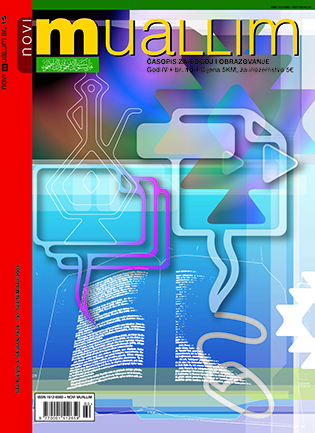THE SCHOOL SYSTEM ON THE TERRITORY OF VELIKA KLADUŠA UNDER THE AUSTRO-HUNGARIAN RULE
DOI:
https://doi.org/10.26340/muallim.v4i15.1503Abstract
This text deals with the issue of the elementary schools that were being set up on the territory of Velika Kladuša under the AustroHungarian rule. The author describes the general environment in Bosnia and Herzegovina at that time. The Austro-Hungarian occupation of Bosnia and Herzegovina meant for Bosniacs a transition from one civilization to the other -to a completely different culture and a way of life. All of this, naturally, could not have happened easily or even painlessly. In the eyes of the Muslims and in the reality, this new civilization was considerably Christian in spirit. All of the institutions and most of all, the schools, had Christian character. Beside the governmental system, the school remained the most powerful tool used for a constant pushing of the Muslim heritage -both endogenous and oriental-Islamic one -into the background. The school and education system which placed emphasis only on its own values, showed disrespect towards other civilizations and the historical development of the people in other fields continuing to deny them with a goal to completely devaluate them. This needs to be emphasized in order to explain, at least partially, the negative attitude of the Muslims towards the state schools at the time. The schools were only opened and carried out the curriculum that served to the general goals of the state. This did not involve setting up a school network, which would include all the children of the school age. The schools were opened slowly and only in such numbers as to satisfy the needs for the most necessary personnel which would then be involved in handicrafts, administration at lower state levels and the industry which only started developing.
Downloads
Published
How to Cite
Issue
Section
License
Naknada:
a. Časopis ne naplaćuje naknadu za obradu članaka (APC) i naknadu za podnošenje članaka.
Autori koji objavljuju u ovom časopisu pristaju na sljedeće uvijete:
- Autori zadržavaju autorska prava i pružaju časopisu pravo prvog objavljivanja, pri čemu će rad jednu godinu po objavljivanju biti podložan licenci Creative Commons imenovanje koja omogućuje drugima da dijele rad uz uvijet navođenja autorstva i izvornog objavljivanja u ovom časopisu.
- Autori mogu izraditi zasebne, ugovorne aranžmane za ne-ekskluzivnu distribuciju rada objavljenog u časopisu (npr. postavljanje u institucionalni repozitorij ili objavljivanje u knjizi), uz navođenje da je rad izvorno objavljen u ovom časopisu.


